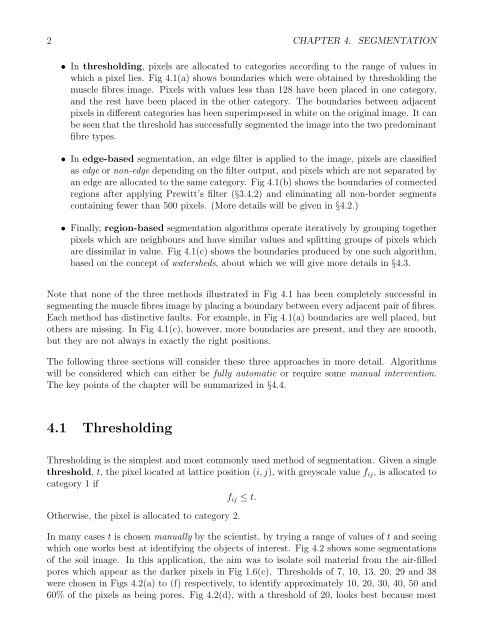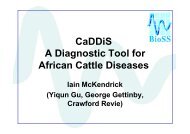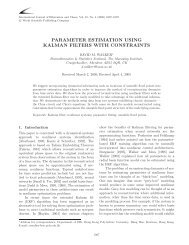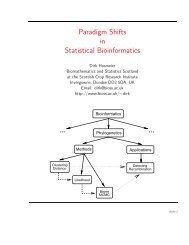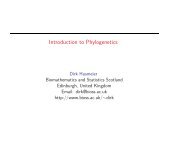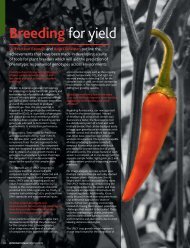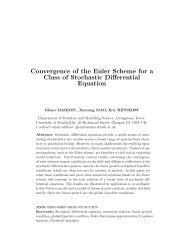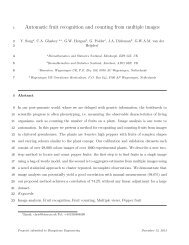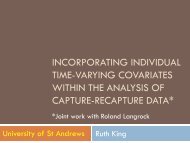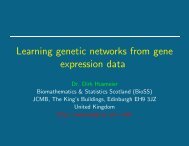Chapter 4 SEGMENTATION
Chapter 4 SEGMENTATION
Chapter 4 SEGMENTATION
You also want an ePaper? Increase the reach of your titles
YUMPU automatically turns print PDFs into web optimized ePapers that Google loves.
2 CHAPTER 4. <strong>SEGMENTATION</strong>• In thresholding, pixels are allocated to categories according to the range of values inwhich a pixel lies. Fig 4.1(a) shows boundaries which were obtained by thresholding themuscle fibres image. Pixels with values less than 128 have been placed in one category,and the rest have been placed in the other category. The boundaries between adjacentpixels in different categories has been superimposed in white on the original image. It canbe seen that the threshold has successfully segmented the image into the two predominantfibre types.• In edge-based segmentation, an edge filter is applied to the image, pixels are classifiedas edge or non-edge depending on the filter output, and pixels which are not separated byan edge are allocated to the same category. Fig 4.1(b) shows the boundaries of connectedregions after applying Prewitt’s filter (§3.4.2) and eliminating all non-border segmentscontaining fewer than 500 pixels. (More details will be given in §4.2.)• Finally, region-based segmentation algorithms operate iteratively by grouping togetherpixels which are neighbours and have similar values and splitting groups of pixels whichare dissimilar in value. Fig 4.1(c) shows the boundaries produced by one such algorithm,based on the concept of watersheds, about which we will give more details in §4.3.Note that none of the three methods illustrated in Fig 4.1 has been completely successful insegmenting the muscle fibres image by placing a boundary between every adjacent pair of fibres.Each method has distinctive faults. For example, in Fig 4.1(a) boundaries are well placed, butothers are missing. In Fig 4.1(c), however, more boundaries are present, and they are smooth,but they are not always in exactly the right positions.The following three sections will consider these three approaches in more detail. Algorithmswill be considered which can either be fully automatic or require some manual intervention.The key points of the chapter will be summarized in §4.4.4.1 ThresholdingThresholding is the simplest and most commonly used method of segmentation. Given a singlethreshold, t, the pixel located at lattice position (i, j), with greyscale value f ij , is allocated tocategory 1 iff ij ≤ t.Otherwise, the pixel is allocated to category 2.In many cases t is chosen manually by the scientist, by trying a range of values of t and seeingwhich one works best at identifying the objects of interest. Fig 4.2 shows some segmentationsof the soil image. In this application, the aim was to isolate soil material from the air-filledpores which appear as the darker pixels in Fig 1.6(c). Thresholds of 7, 10, 13, 20, 29 and 38were chosen in Figs 4.2(a) to (f) respectively, to identify approximately 10, 20, 30, 40, 50 and60% of the pixels as being pores. Fig 4.2(d), with a threshold of 20, looks best because most


